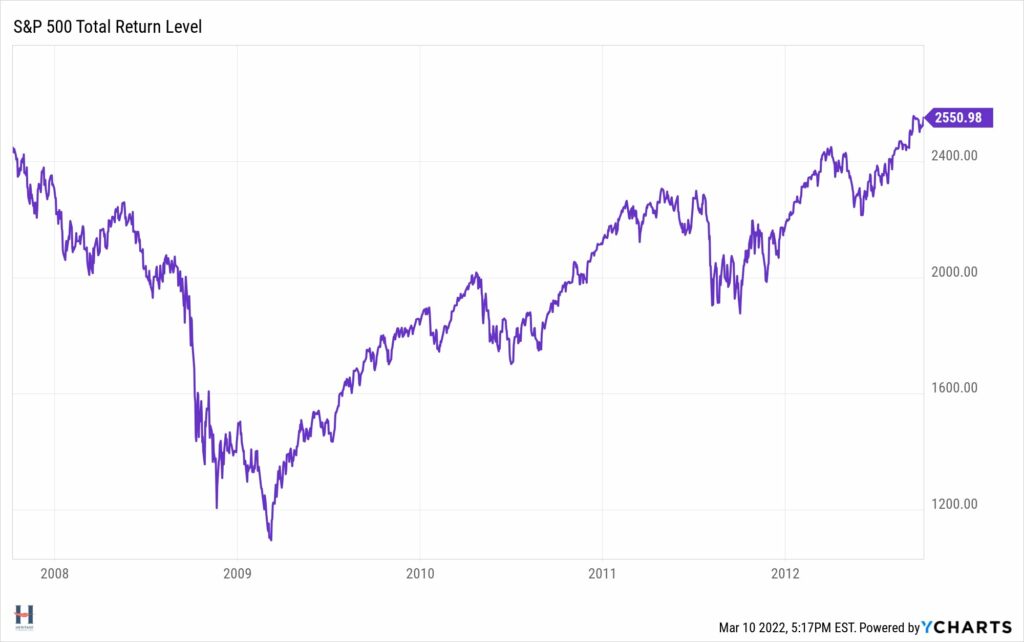Understanding Investment Rule #1
Warren Buffett’s top two investing rules:
- Never lose money
- Don’t forget rule #1
By never lose money, he doesn’t mean avoiding investments that can decrease in value. His crankier sidekick, Charlie Munger, made that quite clear when he said, “if you’re not willing to react with equanimity to a market price decline of 50% two or three times a century, you’re not fit to be a common shareholder and you deserve the mediocre returns you’re going to get.”
Ouch. I’m not saying I agree, but it’s clear these guys aren’t worried about volatility. They embrace it since it creates long-term buying opportunities. And if you set up your portfolio correctly, you won’t have to sell stocks when they’re down to make ends meet in a volatile market.
Rule #1 is about permanent loss of capital.
The 2007-2009 bear market was the worse one of my lifetime. The S&P 500 went down by 57%. Investors who held on recovered those losses less than three years after the market bottomed.

Investors in Lehman Bros. during that same time who saw the stock go to zero never recovered those losses. Zero is permanent.
Investment rule #1 isn’t about avoiding market volatility. It’s about avoiding permanent loss.
Once money is gone, it can’t grow. It’s the same reason Buffett and Munger counsel frugality, and why the first part of my book, Beyond the Basics: Maximizing, Allocating, and Protecting Your Capital focuses on earning and saving money.
Adopt the mindset that a dollar spent today costs significantly more future dollars. It’s inverse compounding. Not only have you spent that dollar, but you also lose its future growth. Spending an extra $5,000 per year every year for twenty years doesn’t cost $100,000, but another $228,810, assuming that money could have grown by 9 percent annually.
Beyond the Basics: Maximizing, Allocating, and Protecting Your Capital
Spent capital can’t grow. Depleted capital can’t grow.
Capital that’s temporarily decreased in value, even by 30% – 50% can eventually grow.
So, how do you avoid a permanent loss of capital?
Here’s how I’ve seen some investors get into trouble with investment rule #1:
- Investing in speculative things like penny stocks, hot tips, and other lottery ticket type investments
- Having a concentrated portfolio. In a portfolio of 5-10 stocks if even only one of those stocks goes bust, you’ve permanently lost 10% – 20% of your portfolio (assuming equal weighting).
- Trading options
- Market timing
I’d add to this list, although it’s not exactly the same, jumping from one investment strategy to the next. You won’t necessarily see a permanent capital loss, but investors typically make these changes at the wrong time so you’ll see consistent underperformance. How Long to Give an Investment Strategy looks at the right amount of investment patience to have based on the performance history of top managers so you don’t jump ship at the wrong time. It also provides some monitoring points to follow to make sure patience is warranted.
Suggested Further Reading
Common Investment Mistakes to Avoid
3 Investment Risks You Can Conquer
